Many canids, a member of the dog family; inhabit tropical wet forests, dry deciduous forests, open wooded areas, scrub forests, and grasslands which are the landscapes of Central India.
Although the wild cats of India are the most enchanting topic for the wildlife enthusiasts across the globe, the dog family beasts, beat all the norms to share the same stage with them. Communal hunters, canids are often misunderstood for either being wild or domesticated as they occupy human-dominated spaces. It seems there is a little understanding of these ravishing species.
The fossil records data of the Oligocene and the Miocene era have made them the oldest extant group of carnivore, which are native to every continent except Antarctica and Australia. In Australia the dingo (a half- domesticated dog) were intruded by humans.
Canids are known for their speed, endurance and the acuteness of smell, which helps them catch their prey over the long distances in relatively open terrain. Not all the canines are social beings. Jackals and foxes are solitary souls that hunt alone or in pairs, which are quite ramrod for their territory as well. These gregarious species (generally ones with larger body sizes) form packs, follows strict social hierarchies and mating systems.
Let’s take you to the comprehensive journey of some of the well-favoured canids, which you might encounter in Central India.
DHOLE (Cuon alpinus)
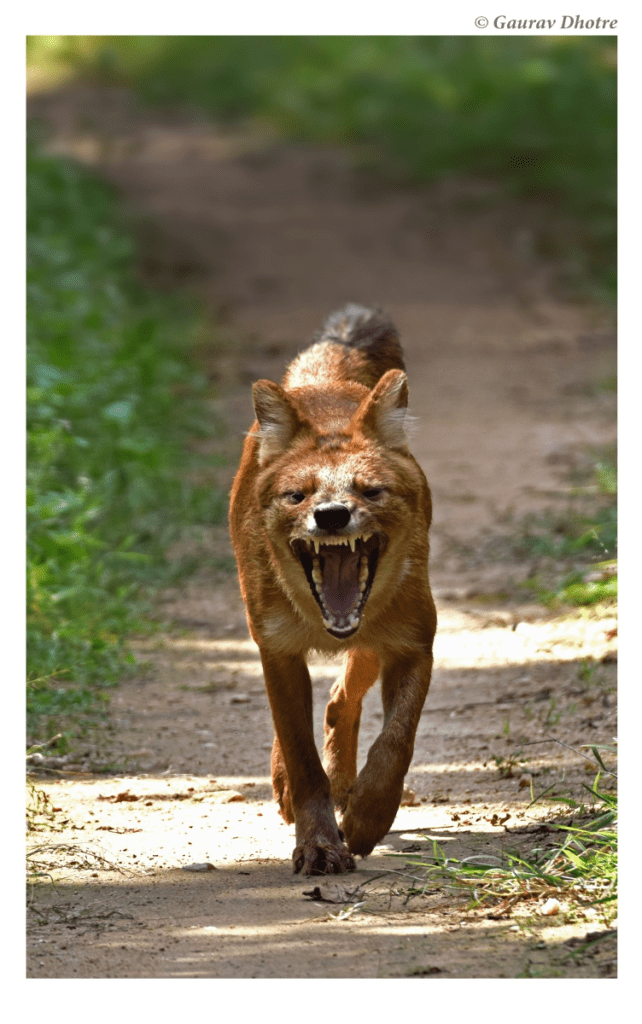
Whistlers from the woods, this apex predator who has managed to get on top of the food chain, by its ability to hunt down 8 times bigger the weight of its own body. Meet the ferocious and virile hunters from the wild, Dhole commonly called as The Asiatic Wild Dog.
A social carnivore, generally found in the pack of 2 to 25 is an adaptable creature, which can be found in the wide sphere of habitats like tropical dry forest, tropical wet forest, production agro-forest, dry deciduous forest and dry scrub forest. Pretty much protective towards their family, a big pack of wild dogs can even take down a tiger or a leopard, so no messing around with them!
Dholes are among the least studied carnivores in the world and are known to feast on their prey before even killing it; this can turn out to be a vicious sight to watch! An endangered species listed by IUCN, due to the massive habitat loss, declining prey base and excessive killing by the local tribes and famers who share the cross borders with the wild, as they become the threat to their livestock, these creatures are butchered away by humans.
Sharing their lands with sapiens, interestingly there has been no human attacks recorded by far. As you can see in the image below, this forest guard is standing merely couple meters away and these Dholes were unperturbed, some busy flower napping.
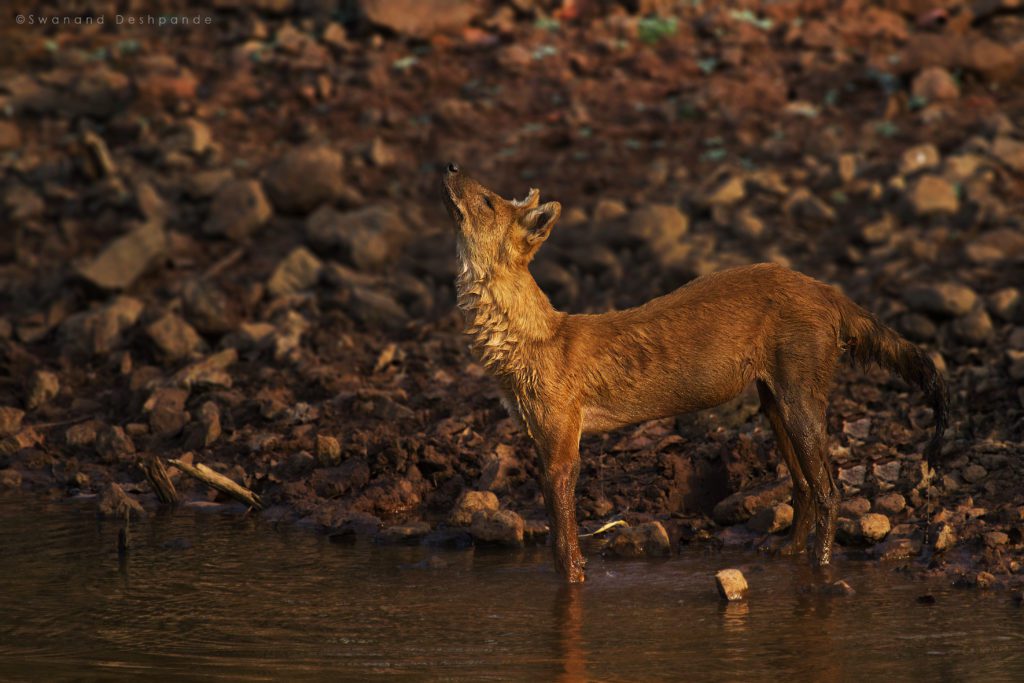
Fewer than 3,000 adults are left in the forest and are best seen in Pench National Park, Satpura National Park and Tadoba National Park. So if you visit any of these national parks, do look out for these prepotent hunters, as they can fascinate you with their way of life in the jungle and can make your dull safari into a stunning one.
INDIAN GOLDEN JACKAL (Canis aureus)
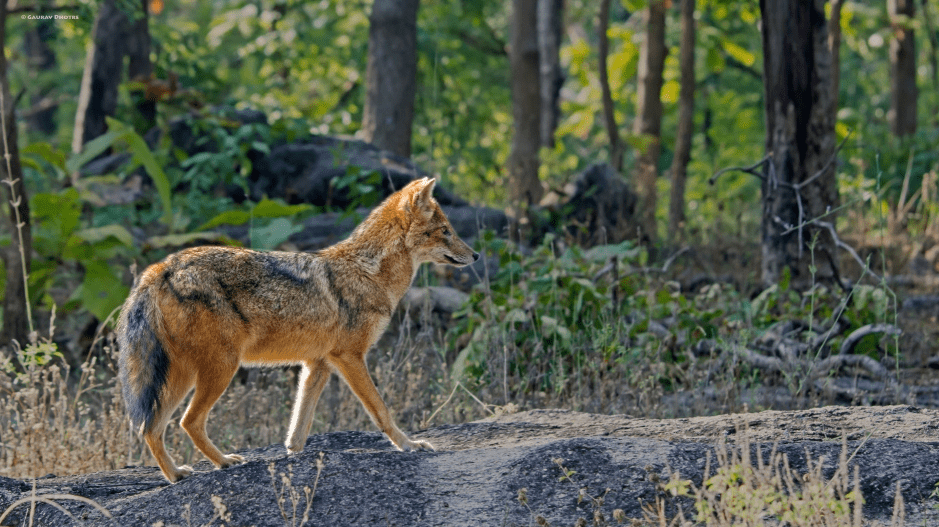
“Jack of all traits” is a phrase we use. Yes, this beautiful canid is all about its boldness and cunningness, and has always been perceived as a mischief maker, greedy and sometimes a conceited creature. Golden jackals have been known from centuries and have been featured in many fables such as an ancient God from Egypt, Anubis who was depicted as a man with a head of a jackal. The geriatric text of Jakatas and Panchtantra of the Hindu mythology depicts jackals as an intelligent and subtle creature.
From dense forest to the urban cities, from the garbage grounds to the reeds, jackals are the most widespread wild canid found in the Indian Subcontinent. Their tolerance of wild conditions has made them pretty much adaptable to the diet they take. Mostly scavengers and occasional hunters, they are known to eat rodents, birds and fruits.
Jackal calling is commonly heard in rural India and are often seen outside the protected areas which are close to human habitation. Your chances of seeing one on the road in the late evening is higher than seeing them in a tiger reserve. Pench National Park and Panna National Park are considered amongst the best places to see these hippy creatures. Some of the best sightings can also be witnessed in the close quarters of our lodges.
There is a popular myth in our jungle, that forest guides believes. If you happen to see a jackal, you will definitely get to see the tiger. So if you want to see the tigers, find the jackal first!
INDIAN FOX (Vulpes bengalensis)
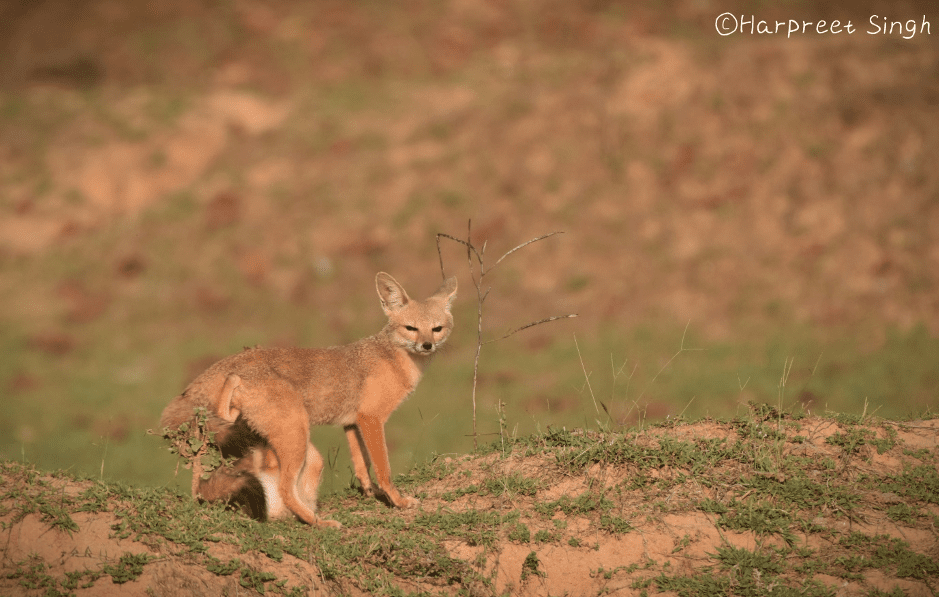
One should not try to make the fun of other’s limitations! No wonder these childhood fox stories are ingrained in our lives so deeply. Let’s introduce you to the smallest wild canid of the Indian Peninsula, The Indian Fox also known as The Bengal Fox.
Belongs to the family of dogs, and is the only type of dog that is capable of retracting their claws like cats do. The Indian Fox lives in open wooded areas, agricultural fields, and dry scrubland. A black tip tail is a prominent feature of this modish creature and is known to be the farmer’s friend as they feed on rodents. Usually monogamous and form pairs that may last for their lifetime. Diminishing habitat and hunting for their skin and flesh has become a life threatening cause for their survival.
Like other canids, fox has been recognised as a symbol of positive spirit. In Mesopotamian Mythology, the fox became the messenger of the Goddess Ninhursag and people from ancient Peru used to believe in fox as warrior and relied upon their intelligence rather than their physical strength. Panna National park, Tadoba National Park and Kanha National park can surprise you with the sightings of these voguish being. On a nature walk outside Kings Lodge, Bandhavgarh you might be lucky to see one near its den.
INDIAN WOLF (Canis lupus pallipes)
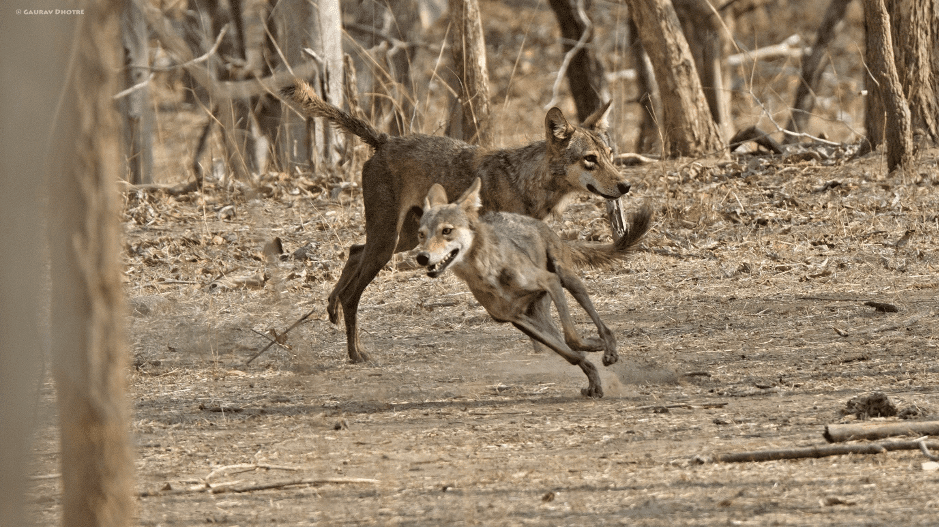
‘For the strength of the pack is the wolf and the strength of the wolf is the pack.’
Known to be the first ancestor of dogs, these unseen predators are now traduced for their survival, as hunting remains unsettled issue in the Indian Jungles.
Often leaving behind their echoes and shadows of their presence, these prowlers of the night are known for their exceptional speed and endurance, which makes them potent hunters. Indian wolf are the sub-species of the Grey Wolf which are found in Europe and America. The habits of these canids are similar to those of the other Grey wolf subspecies. However, Indian wolves generally lives in the pack of 6 to 8 individuals, relatively less vocal and have modified to be the apex hunter of the grasslands. These gangly creatures are widely distributed and are found in the open scrublands and semi-arid areas.
Apart from all the canids, wolves require a bigger home range of about 200 sq km, which also has become a major threat to their lives. In wolves, mating occurs only between the two dominant individuals in pack. Unlike fox and jackal, the Indian wolf has a reputation of being clever and has taken a central role in The Jungle Book for raising Mowgli.
As wolves have always defamed to be the devil and the destructor, this apex predator that have far more reaching beneficial affects upon the entire ecosystem, they are crucial for maintaining the population of ungulates in check, therefore being an indicator of well-balanced ecological unit. What remains to be pondered is that it’s not just about saving these beautiful creatures it is about saving us. As wolf being a highly fragmented species, Pench National Park and Nauradehi Wildlife Sanctuary offers some amazing sightings.
STRIPED HYENA (Hyaena hyaena)
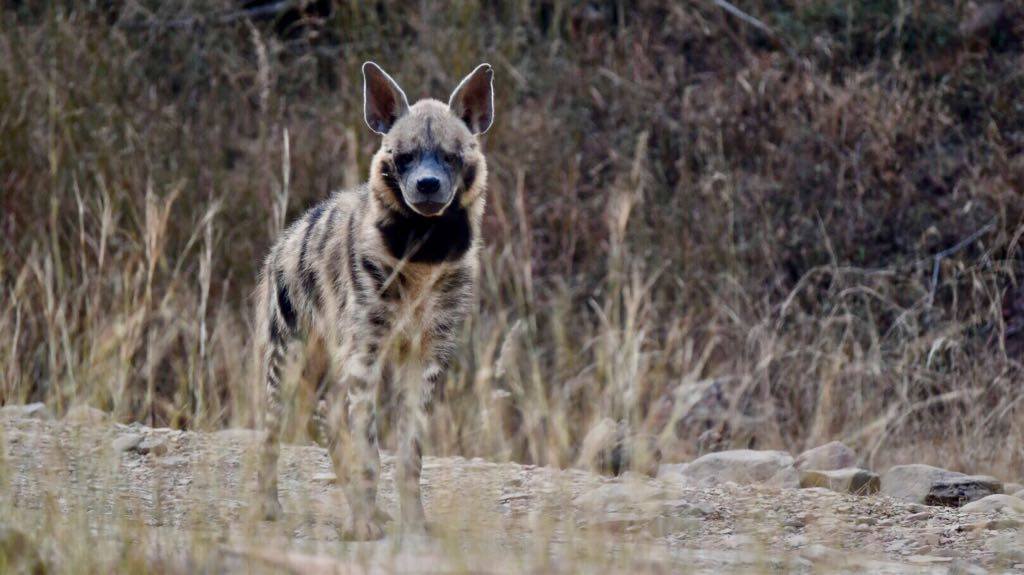
An exception to this group are Striped Hyena’s. They do not belong to the family of Canidae. Genetic and molecular studies have revealed that they do not have any common ancestors from the dog family, hence they have their own family, Hyaenae hyaena. This comprises of four species: the spotted hyena, striped hyena, brown hyena and the aardwolf (a wolf like hyena).
Let’s introduce you to Tabaqui from The Jungle Book, the Striped Hyena, locally known In India as “Lakkad Baggha”. This solitary creature is often misunderstood by villagers for a tiger as their stripes delude the human eyes. They are therefore sometimes poisoned and trapped by people when found close to human habitation.
Ancient folklores have portrayed the striped hyena as a villainous jungle inhabitant, therefore people still continue to misunderstand this otherwise harmless, wonderful being from the forests.
This striped hyena is vastly found across the Indian Subcontinent which inhabits open country, grasslands, scrub forests and woodlands. Hyenas are are known to scavenge the remains of the carcass with bones, hooves, horns and ligaments, as their teeth are strong enough to gnaw and crush them.
Hyenas are best seen in Serengeti National Park, Keoladeo Ghana National Park in Africa and Ranthambore National Park and Panna National Park. On your next visit to Central India do look out for this unique species.
Written By: Himani Singh Chouhan, Naturalist Pench Tree Lodge
Photo Courtesy: Gaurav Dhotre & Harpreet Singh
Visit our lodges in Kanha, Bandhavgarh, Pench, Satpura and Panna to watch these fascinating species frolic in the wild. Get in touch with our trip curators at Pugdundee Safaris to book your next wildlife holiday.
Our trip curators at Pugdundee Safaris are more than happy to assist you. Phone: +91-011-40132680 Email: [email protected]

